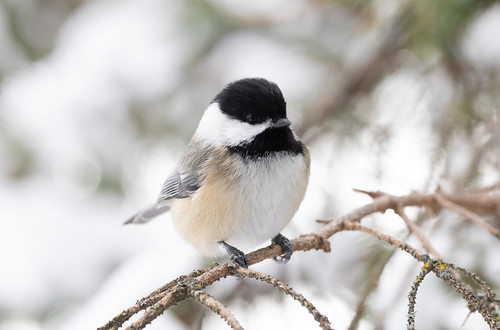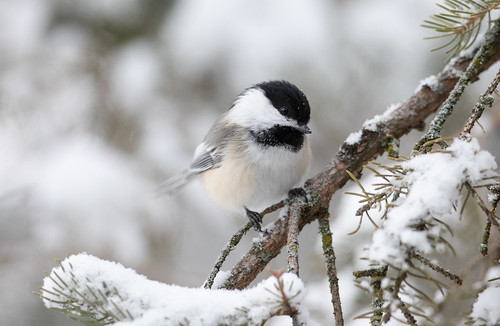It’s hard to keep track of the world’s superlatives, but Guinness World Records is the global authority on all things record-breaking, with offices in the U.K., United States, China, Japan, and the United Arab Emirates and official adjudicators who verify records all over the world. On the Guinness website, the stated purpose of their record keeping is “to make the world a more interesting, fun and positive place,” their vision “to inspire a sense of wonder,” and their mission “to document the incredible.” The Guinness World Record website also bears what seems like an excellent motto, “Officially amazing.”
Some individual birds and some bird species have genuinely earned that distinction. Wisdom the Laysan Albatross is officially the “Oldest Wild Bird.” Some other species of albatrosses and other birds that haven’t been as heavily studied via decades-long banding operations probably include individuals that are older than Wisdom, and some Laysan Albatrosses on other islands, and perhaps even some of Wisdom’s neighbors on Midway Island, may be older, too—Chandler Robbins banded only a fraction of the albatrosses on Midway when he was there. What makes Guinness so valuable is that they require verifiable documentation, and only one bird banded in 1956 or earlier is still being documented as recently as this past winter. When she was banded, Wisdom was a nesting adult, meaning she was at least 5 years old—she could well have been a little or a lot older than 70 this past winter.
 |
| Photo of Emperor Penguin family from Wikipedia, contributed by Snowmanradio. |
That need for verified documentation is why the Emperor Penguin’s record for “lowest temperature endured by a bird” isn’t based on the most extreme temperatures in Antarctica during the bird's nesting season but, rather, on a study at a breeding colony in Antarctica in June 2008, when the air temperature dipped below -4º F and the sky and ice temperatures sunk below -49º F. The record says, “It’s widely acknowledged that emperor penguins have to occasionally endure air temperatures as low as -40º F and beyond, as well as wind gusts that can reach in excess of 90 miles per hour.”
That documentation does seem perfectly legitimate as the "lowest temperatures endured by nesting birds," but sets the bar rather low as far as the “lowest temperature endured by a bird.” In one cruel study, Common Redpolls survived down to -65º F and Hoary Redpolls down to an astonishing -88º F, but that was in a laboratory, not the wild, and wasn't entered in Guinness.
As far as birds in the wild go, right here in Duluth, on 2 January 1885, the temperature dipped to -41º F, and I can't imagine that chickadees didn't survive that. During the 41 winters we’ve lived here, the lowest temperature of the season has dipped to -30º F or colder eleven times, and we've consistently had chickadees at our feeders (as well as plenty of other birds) during all those cold snaps. (During those same 41 winters, the season’s coldest temperature here has been warmer than -20º only six times.)
Temperatures can be significantly colder in the Iron Range. Minnesota’s all-time cold-temperature record was set in Tower on 2 February 1996 with an official thermometer reading of -60º F, and it may have been even colder in Embarrass that same morning—we’ll never know for sure because their official thermometer broke in the extreme cold. The temperature in Duluth that morning was -39º F, and my feeders were filled with chickadees as well as nuthatches, Downy and Hairy Woodpeckers, and other birds, but I wasn’t taking photos back then so have no proof. I recall a news story about a guy who slept out in Tower that night so he could claim to have survived Minnesota’s coldest night ever. He emerged, triumphant, at first light, to news cameras and microphones. I’m sure I heard chickadees calling and even singing in the background of the news coverage, but my vague recollection won’t cut it as far as Guinness World Records go.
I’m sure plenty of songbirds, from redpolls to ravens, in the wilds of Alaska, Canada, Norway, Siberia, and other northern places have survived significantly colder temps than are listed in the Emperor Penguin entry in Guinness, but apparently no one has submitted documentation proving this.
And so far, no one has submitted to Guinness documentation of Black-capped Chickadees present in Tower that record-breaking morning, or on any other morning when temperatures were colder than -40º. If anyone has photographic or audio confirmation of Black-capped Chickadees in Tower, Minnesota, on 2 February 1996, I’d be more than happy to help you submit the record. If nothing else, getting that into Guinness would encourage researchers in Antarctica and far northern places to step up their game.
Meanwhile, it’s fun to realize that our third-of-an-ounce Black-capped Chickadees have survived colder temperatures than those that got 50–100-pound Emperor Penguins into Guinness World Records. Even without the record, my favorite bird is plenty cool enough for me.

